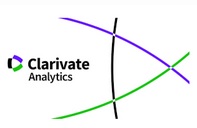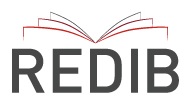Improving number sense in kindergarten children with low achievement in mathematics
Supporting Agencies
- MEC
Abstract
The present study evaluated the effectiveness of educational intervention software, Playing with Numbers-2 on early mathematics learning. This software trains learning and mathematical reasoning skills, using an evidenced-based procedure. A total of 156 second-year preschool boys and girls (Mean age = 65.39 months) were assessed by the Early Numeracy Test (ENT), a computerized test to evaluate early math competency. An experimental design with control group and pre and post-intervention assessments was used. Significant differences between pre- and post- intervention for the experimental group was obtained average increase for ENT scores achieved by the experimental group was significantly higher than the control group. The effect size was also significant (d = 1.35; and r = 0.56). This educational intervention using computer-based software, while it does not replace face-to-face instruction, may help to improve the performance of young students at risk of developing problems learning mathematics.
Downloads
References
Aktaş-Arnas, Y. (2005). Computer-Assisted Instruction in Pre-School Education. Eurasian Journal of Educational Research, 20, 36-47.
Aragón, E., Aguilar, M., Navarro, J., & Araújo, A. (2015). Efectos de la aplicación de un programa de entrenamiento específico para el aprendizaje matemático temprano en educación infantil. Revista Española de Pedagogía, 260, 99-113.
Aragón, E., Navarro, J. I., Aguilar, M., & Cerda, G. (2015). Cognitive predictors of 5-year-old students’ early number sense. Journal of Psychodidactics, 20(1), 83-97. doi:10.1387/RevPsicodidact.11088
Ayvaci, H. S., & Devecioglu, Y. (2010). Computer-assisted instruction to teach concepts in pre-school education. Procedia Social and Behavioral Sciences, 2, 2083-2087. doi:10.1016/j.sbspro.2010.03.285
Baroody, A. J. & Rosu, L. (2006). Adaptive expertise with basic addition and subtraction combinations – The number sense view. Paper presented at the Meeting of the American Educational Research Association, San Francisco, CA.
Bulut, S. (2013). Desarrollo de la inteligencia en niños en edad preescolar con desventajas socioeconómicas. Anales De Psicología / Annals of Psychology, 29(3), 855-864. doi:10.6018/analesps.29.3.168101
Butterworth, B., & Laurillard, D. (2010). Low numeracy and dyscalculia: identification and intervention. ZDM Mathematics Education, 42, 527–539. doi:10.1007/s11858-010-0267-4
Butterworth, B., Varma, S., & Laurillard, D. (2011). Dyscalculia: from brain to education. Science, 332(6033), 1049-1053. doi: 10.1126/science.1201536
Clements, D. H., & Sarama, J. (2007). Building blocks, Volumes 1 and 2. Columbus, OH: McGraw Hill Education.
Clements, D. H., & Sarama, J. (2011). Early childhood mathematics intervention. Science, 333(6045), 968–970. doi:10.1126/science.1204537
Dehaene, S. (2001). Precis of the number sense. Mind & Language, 16, 16−36. doi:10.1111/1468-0017.00154
Dehaene, S. (2009), Origins of mathematical intuitions. Annals of the New York Academy of Sciences, 1156, 232–259. doi: 10.1111/j.1749-6632.2009.04469.x
Dehaene, S., Piazza, M., Pinel, P., & Cohen, L. (2003). Three parietal circuits for number processing. Cognitive Neuropsychology, 20, 487-506. doi:10.1080/02643290244000239
Demir, N. & Kabadayı, A. (2008). Comparison of Traditional and Computer -Assisted Teaching Methods for Preschoolers’ Color Concept Acquisition. International Journal of Human Sciences. 5 (1) 1-18
Desoete, A., Ceulemans, A., De Weerdt, F., & Pieters, S. (2012). Can we predict mathematical learning disabilities from symbolic and non‐symbolic comparison tasks in kindergarten? Findings from a longitudinal study. British Journal of Educational Psychology, 82 (1), 64-81.
Döst, S., Saglam, Y., & Ugur Altay, A. (2011). Use of computer algebra systems in mathematics teaching at university: a teaching experiment. H. U. Journal of Education, 40, 140-151
Dowker, A. D. (2005). Individual differences in arithmetic. Implications for psychology, neuroscience and education. Hove, UK: Psychology Press.
Gee, J. P. (2009). Deep learning properties of good digital games: how far can they go? In U. Ritterfeld, M. Cody, & P. Vorderer (Eds.), Serious games: Mechanisms and effects (pp. 65–80). New York & London: Routledge.
Gersten, R., Jordan, N. C., & Flojo, J. R. (2005). Early identification and interventions for students with mathematics difficulties. Journal of Learning Disabilities, 38, 293–304. doi:10.1177/00222194050380040301
Gervasoni, A. (2005). The diverse learning needs of young children who were selected for an intervention program. In H. L. Chick y J. L. Vincent (Eds.), Proceedings of the 29th annual conference of the International Group for the Psychology of Mathematics Education (Vol. 3, pp. 33-40). Melbourne, Australia: PME.
Griffin, S. (2000). Number Worlds: Preschool level. Durham, NH: Number Worlds Alliance Inc.
Griffin, S. (2004). Building number sense with Number Worlds: A mathematics program for young children. Early Childhood Research Quarterly, 19, 173–180. doi:10.1016/j.ecresq.2004.01.012
Griffin, S., Case, R., & Capodilupo, A. (1995). Teaching for understanding: The importance of central conceptual structures in the elementary mathematics curriculum. In A. McKeough, I. Lupert, & A. Marini (Eds.), Teaching for transfer: Fostering generalization in learning (pp. 121–151). Hillsdale, NJ: Erlbaum.
Halpern, D. F., Millis, K., Graesser, A. C., Butler, H., Forsyth, C., & Cai, Z. (2012). Operation ARA: A computerized learning game that teaches critical thinking and scientific reasoning. Thinking Skills and Creativity, 7, 93-100.
Hindman, A. H., Skibbe, L. E., Miller, A., & Zimmerman, M. (2010). Ecological contexts and early learning: Contributions of child, family, and classroom factors during Head Start, to literacy and mathematics growth through first grade. Early Childhood Research Quarterly, 25, 235–250. doi:10.1016/j.ecresq.2009.11.003
Ihmedieh, F. (2010). The role of computer technology in teaching reading and writing: Early childhood teachers’ beliefs and practices. Journal of Research in Childhood Education, 24(1), 60-79. doi:10.1080/02568540903439409
Irish, C. (2002). Using peg- and keyword mnemonics and computer-assisted instruction to enhance basic multiplication performance in elementary students with learning and cognitive disabilities. Journal of Special Education Technology, 17(4), 29–40.
Jansen, B. R. J., Louwerse, J., Straatemeier, M., Van der Ven, S. H. G., Klinkenberg, S., & Van der Maas, H. L. J. (2013).The influence of experiencing success in math on math anxiety, perceived math competence, and math performance. Learning and Individual Differences, 24, 190–197
Jordan, N. C., Glutting, J., & Ramineni, C. (2008). A number sense assessment tool for identifying children at risk for mathematical difficulties. In A. Dowker (Ed.), Mathematical difficulties: Psychology and intervention (pp. 45-58). San Diego, CA: Academic Press. http://dx.doi.org/10.1016/B978-012373629-1.50005-8
Jordan, N. C., Kaplan, D., Locuniak, M. N., & Ramineni, C. (2007). Predicting first-grade math achievement from developmental number sense trajectories. Learning Disabilities Research & Practice, 22(1), 36−46. doi:10.1111/j.1540-5826.2007.00229.x
Jordan, N. C., Kaplan, D., Nabors Oláh, L. & Locuniak, M. N. (2006), Number sense growth in kindergarten: A longitudinal investigation of children at risk for mathematics difficulties. Child Development, 77, 153–175. doi: 10.1111/j.1467-8624.2006.00862.x
Jordan, N. C., Kaplan, D., Ramineni, C., & Locuniak, M. N. (2009). Early math matters: Kindergarten number competence and later mathematics outcomes. Developmental Psychology, 45(3), 850−867. doi:10.1037/a0014939
Judge, S., Puckett, K., & Cabuk, B. (2004). Digital equity: New findings from the early childhood longitudinal study. Journal of Research on Technology in Education, 36(4), 383-396.
Klinkenberg, S., Straatemeier, M., & van der Maas, H. L. J. (2011). Computer adaptive practice of maths ability using a new item response model for on the fly ability and difficulty estimation. Computers in Education, 57, 1813–1824. doi:10.1016/j.compedu.2011.02.003.
Klopfer, E., Osterweil, S., & Salen, K. (2009). Moving learning games forward: Obstacles, opportunities, & openness. Boston: The Education Arcade, Retrieved November 5, 2012, from http://education.mit.edu/papers/MovingLearningGamesForward_EdArcade.pdf.
Melton, B., Graf, H., & Chopak-Foss, J. (2009). Achievement and satisfaction in blended learning versus traditional general health course designs. International Journal for the Scholarship of Teaching and Learning, 3(1), 1–13.
National Research Council (2009). Mathematics learning in early childhood: Paths toward excellence and equity. Washington, DC: The National Academies Press.
Navarro, J. I., Aguilar, M., García, M., Menacho, I., Marchena, E., & Alcalde, C. (2010). Diferencias en habilidades matemáticas tempranas en niños y niñas de 4 a 8 años. Revista Española de Pedagogía, 68, 85-98.
Navarro, J. I., Ruiz, G., Alcalde, C., Aguilar, M. & Marchena, E. (2007). Jugando con los números 2. Software educativo. Cádiz: Departamento de Psicología.
Piaget, J., & Szeminska, A. (1941). Génesis del número en el niño. Buenos Aires: Guadalupe.
Pianta, R. C., Belsky, J., Houts, R., & Morrison, F. (2007). Opportunities to learn in America’s elementary classrooms. Science, 315, 1795–1976. doi:10.1126/science.1139719
Räsänen, P., Salminen, J., Wilson, A. J., Aunio, P., & Dehaene, S. (2009). Computer-assisted intervention for children with low numeracy skills. Cognitive Development, 24(4), 450-472. http://dx.doi.org/10.1016/j.cogdev.2009.09.003
Reynolds, A. J., Temple, J. A., White, B. A. B., Ou, S., & Robertson, D. L. (2011). Age 26 cost– benefit analysis of the child-parent center early education program. Child Development, 82, 379–404. doi:10.1111/j.1467-8624.2010.01563.x
Reynolds, A., Temple, J. A., & Ou, S. R. (2010). Preschool education, educational attainment, and crime prevention: Contributions of cognitive and non-cognitive skills. Children and Youth Service Review, 32, 1054−1063. doi:10.1016/j.childyouth.2009.10.019
Saade, R. G., Morin, D., & Thomas, J. D. (2012). Critical thinking in E-learning environments. Computers in Human Behavior, 28(5), 1608-1617.
Sarama, J., Clements, D. H., Starkey, P., Klein, A., & Wakeley, A. (2008). Scaling up the implementation of a pre-kindergarten mathematics curriculum: Teaching for understanding with trajectories and technologies. Journal of Research on Educational Effectiveness, 1, 89–119. doi:10.1080/19345740801941332
Schneider, M., Grabner, R. H., & Paetsch, J. (2009). Mental number line, number line estimation, and mathematical achievement: Their interrelations in grades 5 and 6. Journal of Educational Psychology, 101(2), 359-372. doi:10.1037/a0013840
Toll, S. W., & Van Luit, J. E. (2014). Effects of remedial numeracy instruction throughout kindergarten starting at different ages: Evidence from a large-scale longitudinal study. Learning and Instruction, 33, 39-49.
Torgerson, C. J., Wiggins, A., (…) & Tymms, P. (2012). The effectiveness of an intensive individual tutoring programme (Numbers Count) delivered individually or to small groups of children: a randomized controlled trial. Effective Education, 4(1), 73. doi:86. 10.1080/19415532.2013.778591
U.S. Department of Health and Human Services. (2009). Head Start State Collaboration Offices 2007 Annual State Profiles. Retrieved December, 1, 2012, from http://eclkc.ohs.acf.hhs.gov/hslc/states/collaboration/HSSCO/HSSCO_2007_Profiles1[1].pdf
Van Luit, J., Van De Rijt, B., Araújo, A., Aguilar, M., Aragón, E., Ruiz, G., …García-Sedeño, M. (2015). Test de evaluación de la competencia matemática temprana-revisado (TEMT-i). Madrid: EOS (en prensa)
Vernadakis, N., Avgerinos, A., Tsitskari, E., & Zachopoulou, E. (2005). The use of computer assisted instruction in preschool education: making teaching meaningful. Early Childhood Education Journal, 33, 2, 99-104. doi:10.1007/s10643-005-0026-2
Vernadakis, N., Giannousi, M., Derri, V., Michalopoulos, M., & Kioumourtzoglou, E. (2012). The impact of blended and traditional instruction in students’ performance. Procedia Technology, 1, 439–443. doi:10.1016/j.protcy.2012.02.098
Wilson, A. J., Dehaene, S., Dubois, O., & Fayol, M. (2009). Effects of an adaptive game intervention on accessing number sense in low‐socioeconomic‐status kindergarten children. Mind, Brain, and Education, 3(4), 224-234.
Wilson, A. J., Dehaene, S., Pinel, P., Revkin, S. K., Cohen, L., & Cohen, D. (2006). Principles underlying the design of “The Number Race”, an adaptive computer game for remediation of dyscalculia. Behavioral and Brain Functions, 2(19).
Wilson, A. J., Revkin, S. K., Cohen, D., Cohen, L., & Dehaene, S. (2006). An open trial assessment of “The Number Race”, an adaptive computer game for remediation of dyscalculia. Behavioral and Brain Functions, 2(20). doi:10.1186/1744-9081-2-20.
Wilson, A.J., & Dehaene, S. (2007). Number Sense and Developmental Dyscalculia. In D. Coch, G. Dawson and K.W. Fischer (Ed.), Human behavior, learning, and the developing brain: Atypical development (pp. 212-238). New York: Guilford Press.
Wright, R. J., Martland, J., Stafford, A. K., & Stanger, G. (2006). Teaching number: Advancing children's skills and strategies. London: Paul Chapman Publishing.
Young-Loveridge, J. (2004). Effects on early numeracy of a program using number books and games. Early Childhood Research Quarterly, 19, 82-98. doi:10.1016/j.ecresq.2004.01.001
The works published in this journal are subject to the following terms:
1. The Publications Service of the University of Murcia (the publisher) retains the property rights (copyright) of published works, and encourages and enables the reuse of the same under the license specified in paragraph 2.
© Servicio de Publicaciones, Universidad de Murcia, 2022
2. The works are published in the online edition of the journal under a Creative Commons Reconocimiento-CompartirIgual 4.0 (legal text). You can copy, use, distribute, transmit and publicly display, provided that: i) you cite the author and the original source of publication (journal, editorial and URL of the work), ii) are not used for commercial purposes, iii ) mentions the existence and specifications of this license.
This work is licensed under a Creative Commons Attribution-ShareAlike 4.0 International License.
3. Conditions of self-archiving. Is allowed and encouraged the authors to disseminate electronically pre-print versions (version before being evaluated and sent to the journal) and / or post-print (version reviewed and accepted for publication) of their works before publication, as it encourages its earliest circulation and diffusion and thus a possible increase in its citation and scope between the academic community. RoMEO Color: Green.















